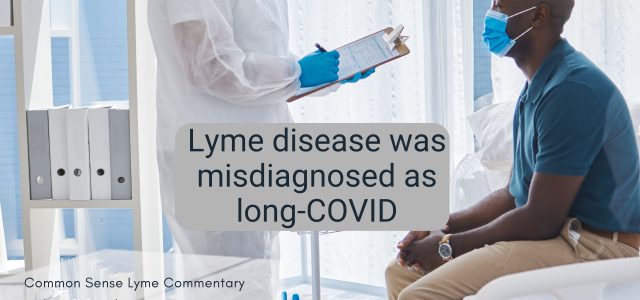Call for your appointment today 914-666-4665 | Mt. Kisco, New York

Not All Brain Fog Is Post-Viral
In the wake of the pandemic, I’ve seen an increasing number of patients diagnosed with Long COVID.
My patient was told her fatigue, brain fog, dizziness, and poor sleep were just viral aftereffects. Some reassured her it would fade. Others told her it was untreatable. But she wasn’t getting better.
When I took a closer look?
It wasn’t Long COVID.
She was suffering from Lyme disease—misdiagnosed as Long COVID.
That misdiagnosis changes everything—from treatment options to long-term outcome.
Similar Symptoms, Different Causes
It’s easy to see why the confusion happened. Both Lyme disease and Long COVID can cause:
-
- Brain fog
- Chronic fatigue
- POTS or lightheadedness
- Mood changes
- Migratory pain
- Exercise intolerance
- Poor sleep
But while Long COVID care remains mostly supportive, Lyme disease and its co-infections can be treated.
I’ve had patients who never had COVID—or recovered fully—then fell ill months later. The trigger? Not a virus, but an undiagnosed tick-borne illness.
The Risks of Mislabeling
Long COVID has helped validate persistent symptoms. But it’s also become a convenient catch-all.
When physicians assume all fatigue and brain fog are viral in origin, they often stop asking the right questions:
-
- Was Lyme disease truly ruled out?
- Were co-infections like Bartonella or Babesia ever considered?
- Were tests interpreted clinically—or dismissed if negative?
I’ve had patients go over a year under the Long COVID umbrella—without any improvement—until we found and treated the infection beneath it all.
What I Do in My Practice
Here’s how I approach these patients differently:
-
- Take a full history of outdoor exposure, travel, and past undiagnosed illnesses
- Review Lyme testing thoroughly—and go beyond standard two-tier tests
- Screen for tick-borne co-infections
- Start treatment based on symptoms and clinical suspicion—not just labs
- Reevaluate patients diagnosed with Long COVID if they’re not improving
Once we treat the infection, many so-called “post-COVID” symptoms start to fade.
Final Word: Don’t Let a Label Stop the Search
If your patient’s symptoms began after the pandemic, but they never had a confirmed case…
If they’re not getting better, even with Long COVID care…
If they’ve been told it’s “just post-viral”—but it doesn’t feel right…
Ask the question that could change everything:
Could this be Lyme disease misdiagnosed as Long COVID?
Because healing starts with the right diagnosis.



